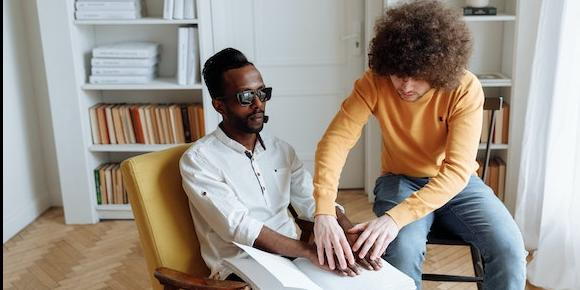How our senses tell our brain what to do: A chiropractor's perspective

- posted: Dec. 17, 2022
Here are our 5 senses:
1. Sight
2. Hearing
3. Touch
4. Taste
5. Smell
Do our senses work alone or together?
They do both. They work independently but collaborate or work together collecting sensory information to give the brain information in order to respond to our surroundings. They help with our primitive responses and automatic reactions to the environment around us.
Sometimes one will win over the other in certain situations. When our eyes are seeing something different than what our ears are hearing, one will drop out based on the severity of the stimuli.
If someone is blind, hearing will become more sensitive. If someone is both deaf and blind, touch can be used to teach speech. Putting hands on the jaw and mouth of someone teaching speech can help show how to make sound.
According to Janina Seubert and Christina Regenbogen who authored "I know how you feel", our senses must regularly meet and greet the brain to provide accurate impressions of the world. Our ability to perceive the emotions of others relies on combinations of cues from sounds, sights and even smells. These are called "perceptual systems".
These systems work together to send sensory information to the brain. For example smells connect with memories or emotion centers of the brain and trigger reactions and responses.
Normally we can tell the difference between what our eyes are seeing and what we are hearing. But there are some cases in which these two can become interlaced. When speaking, our brain interprets information from our ears with what is being seen with our eyes. Our visual cues influence what we are hearing.
So, we can actually shape what we are hearing when looking at the mouth movements. In a video called the McGurk Effect, the same person is saying "Bah" but moving their lips differently. We then think they are saying different statements even when they are exactly the same. This is because our eyes beat out our ears.
Are all animal senses the same?
Bats, whales and other animals put out sounds into the atmosphere in order to "see" what is surrounding them. They interpret sound waves that are bouncing off objects. This is called echolocation. Blind people have to do the same by using sounds or clicks so they can use their ears to navigate and move about.
As I mentioned earlier, people who are both deaf and blind use other senses to learn and understand the world around them. A technique used to learn to speak without our sense of sight and sound is called the Tadoma Speechreading Method. This is by touching the mouth and jaw of a person speaking and repeating. Helen Keller was taught to speak using by this method.
Our brain is constantly receiving and sending off messages. Our sensory nerves are at work at all times, even during sleep. That is why we wake up when there is a noise or smell something strange. The brain is on and working 24/7. This is why keeping our brain healthy is key to great health and optimal living.
Dr. Amie Gregory, DC, CCEP, ANF is a San Francisco, CA and San Carlos, CA chiropractor that understands full body health. She works with athletes, expectant moms, office workers and everyone else in between. Contact our San Francisco, CA chiropractic office or San Carlos, CA chiropractic office today!
Resources:
https://www.youtube.com/watch?v=U_QMS-hzRMs&ab_channel=TedMoallem
https://www.youtube.com/watch?v=2k8fHR9jKVM&ab_channel=sixesfullofnines
Location
Find us on the map - Please click desired location below
Precise Moves Chiropractic San Francisco
3150 18th Street, Suite 334
San Francisco, CA 94110, United States
24 hour Scheduling makes it easy!
(Hours may change due to doctor availability)
Hours in the mission district, San Francisco
8-12pm
Closed
3-6PM
8-12PM
3-8PM
8:00 am - 12:00 pm
Closed
